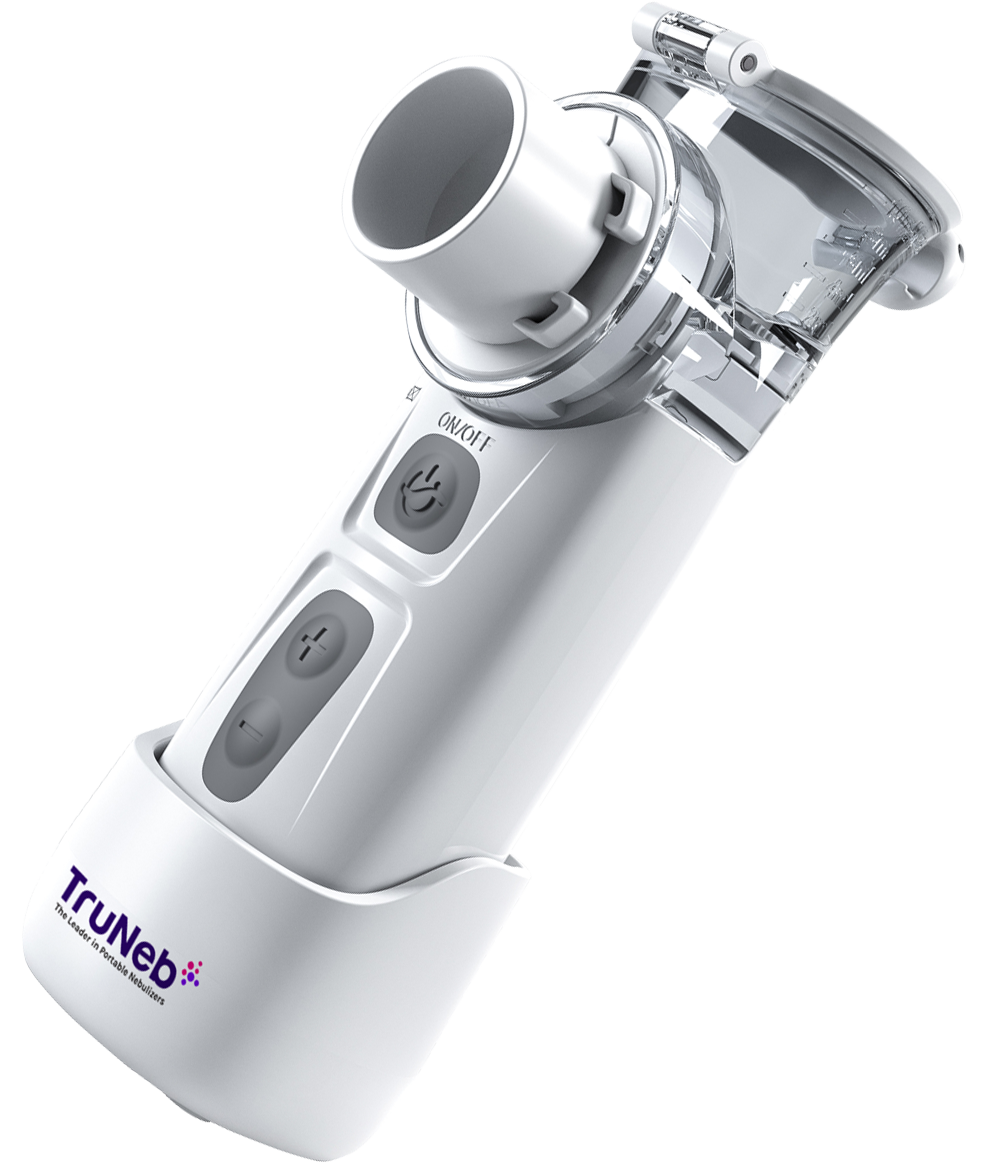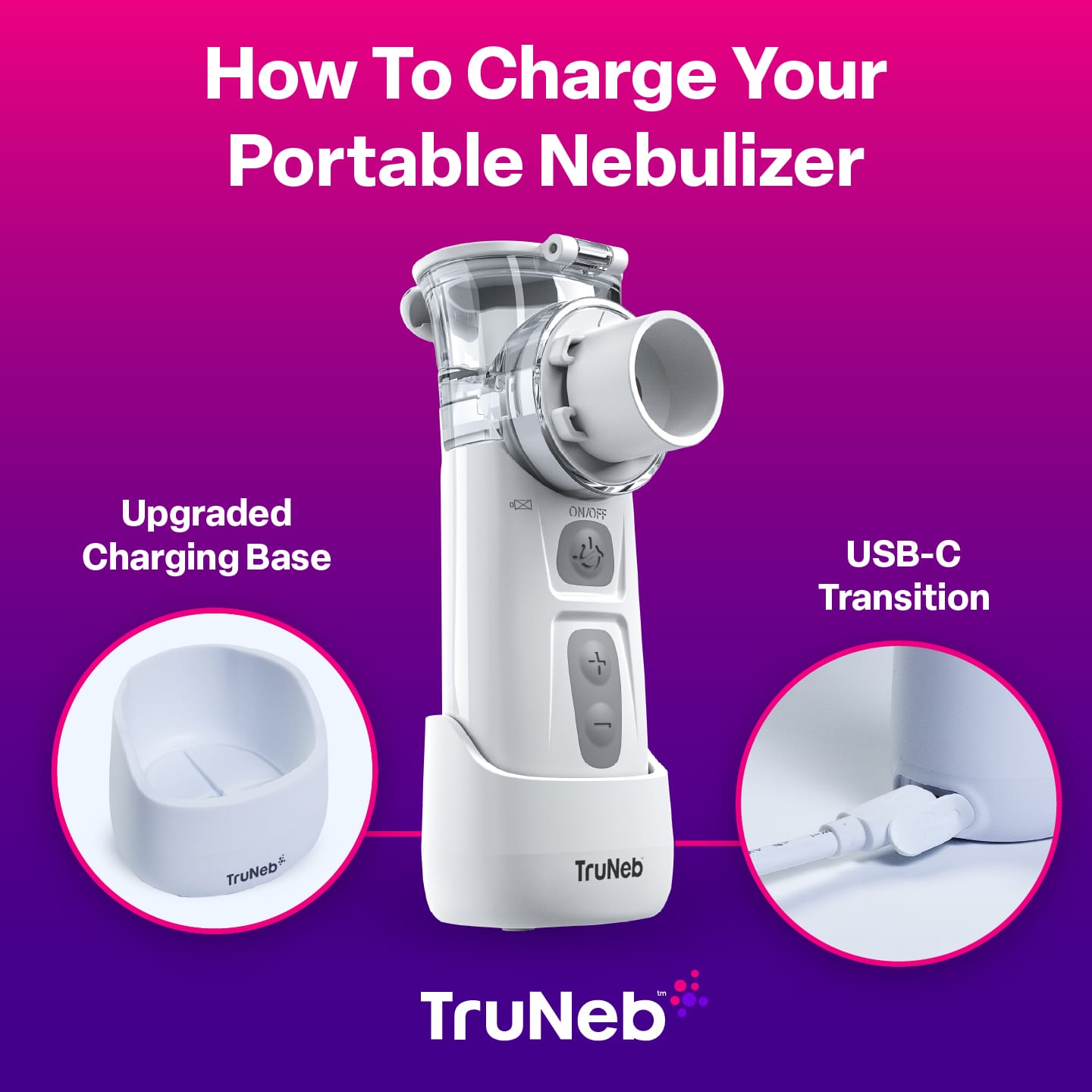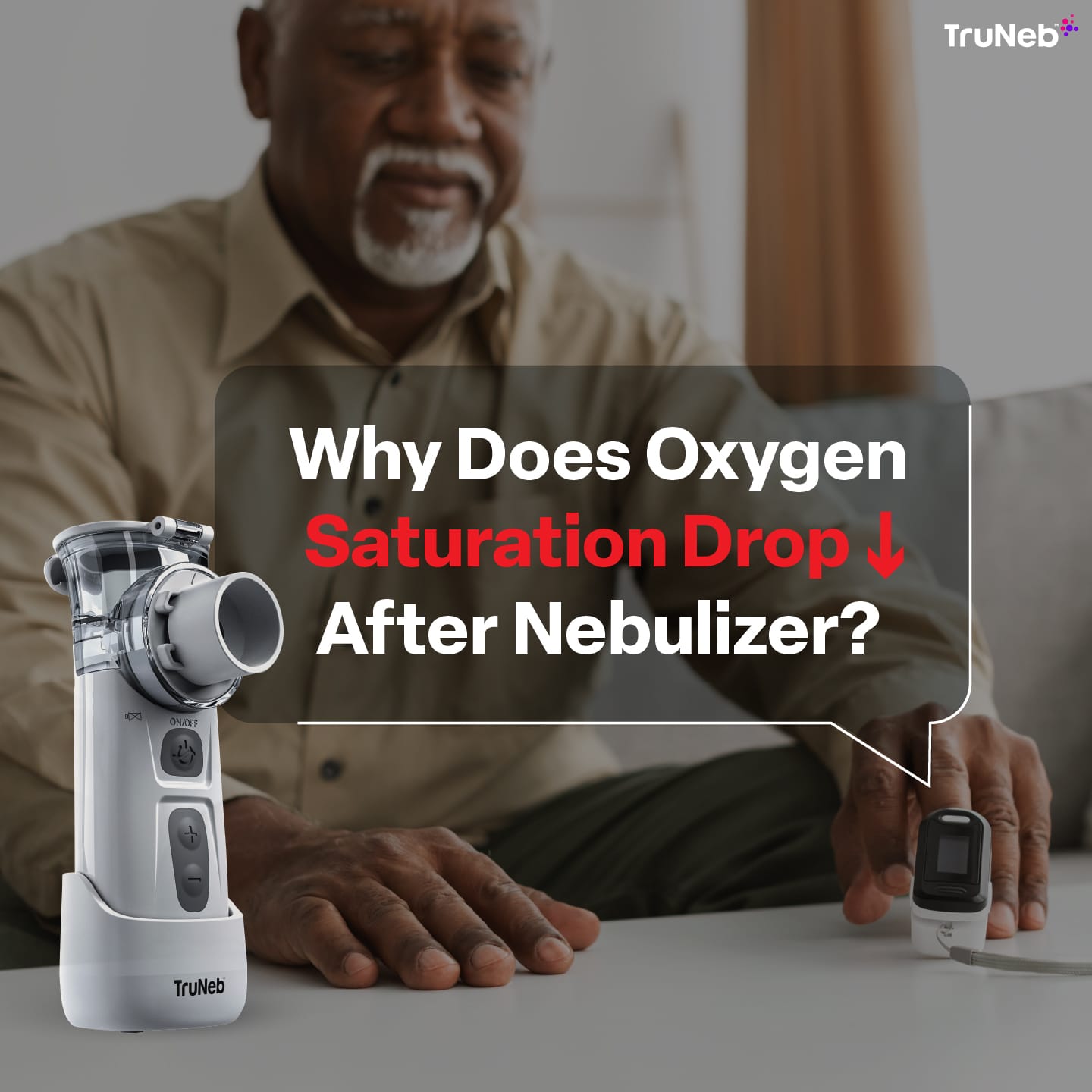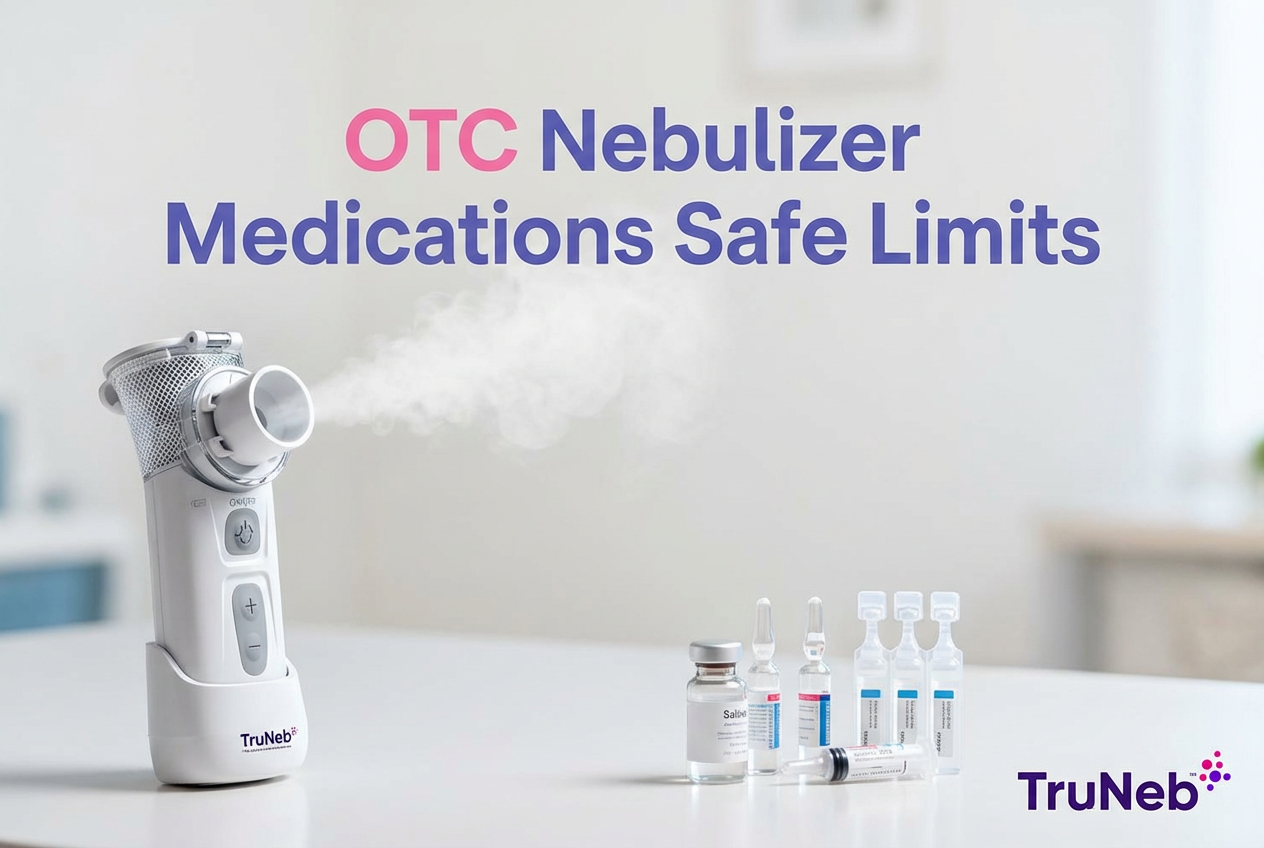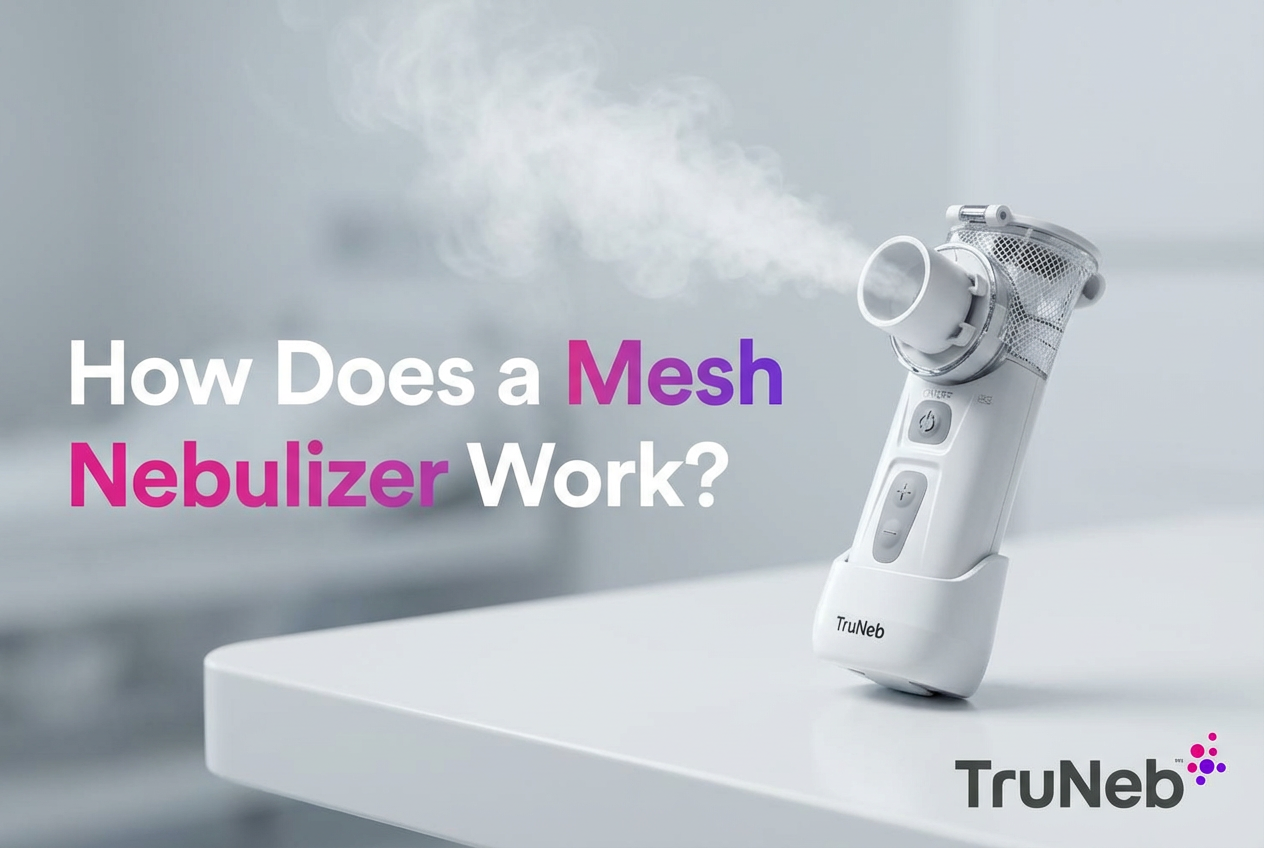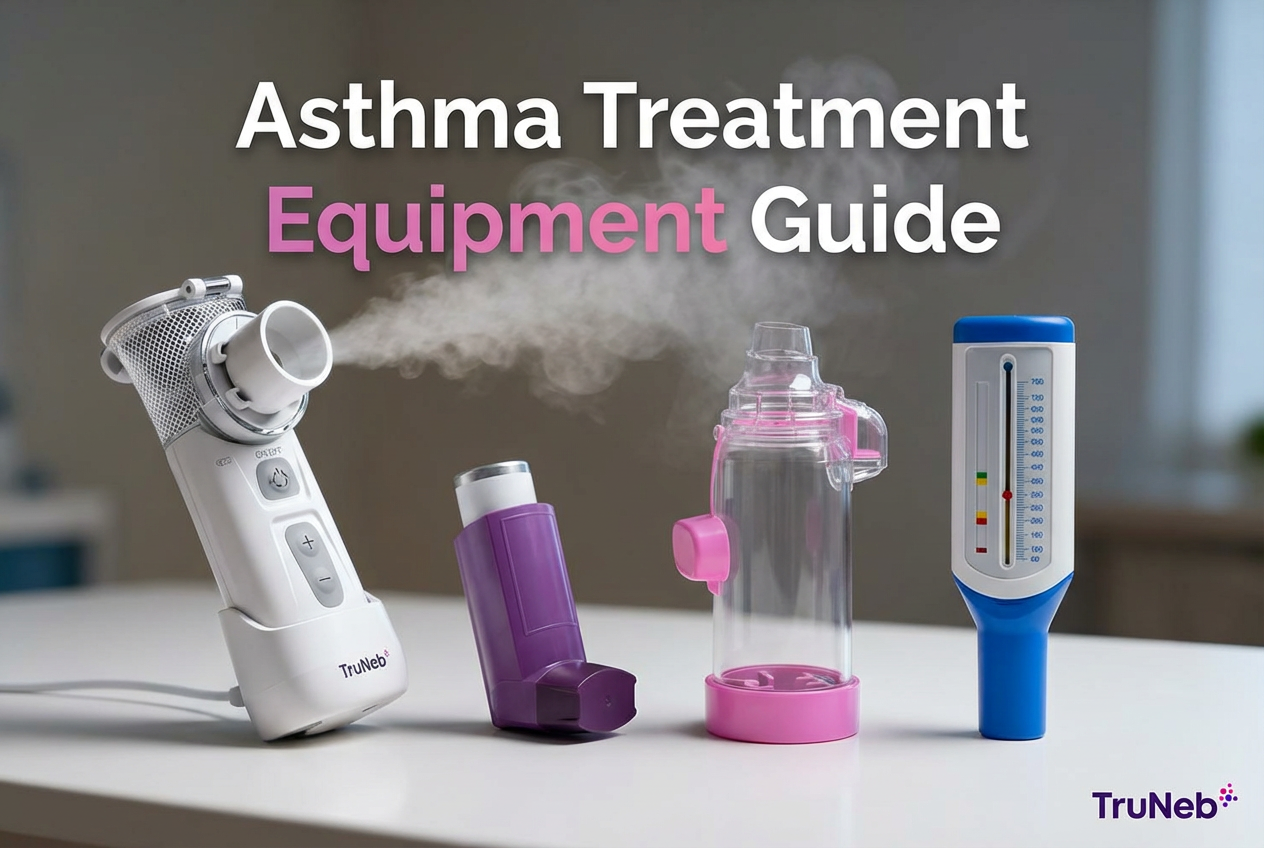On this page
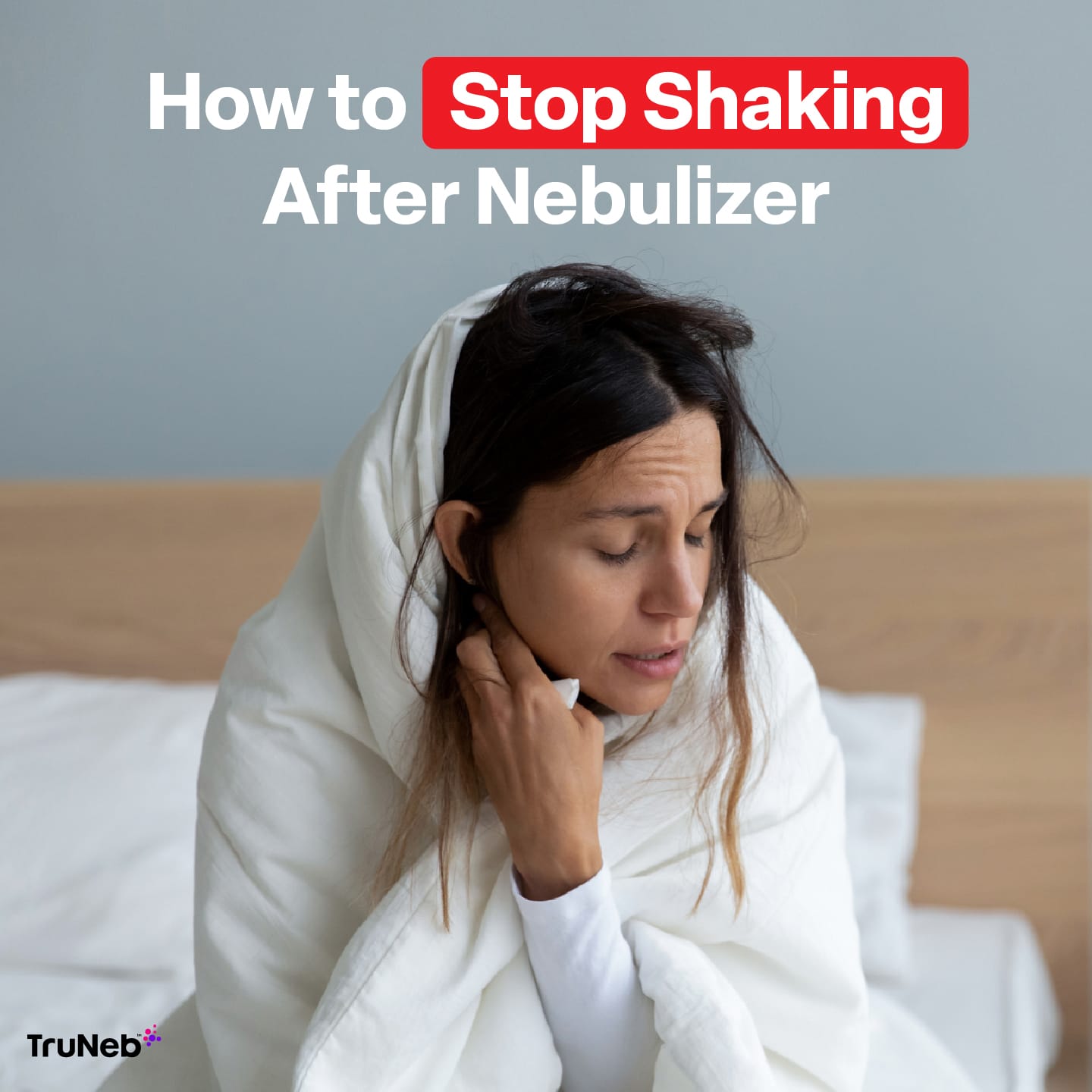
Shaking or feeling jittery after using your nebulizer is a common feeling. And it can be a bit uncomfortable until the effect wears off. You might even notice your heart rate has increased along with the shakiness. This is all usually totally normal. Let’s talk about why it happens and how to stop shaking after nebulizer treatments.
Why Do I Get Shaky After Using My Nebulizer?
If you nebulize albuterol or any other medication with albuterol, you might feel a shaking feeling afterward. Why does this happen?
Albuterol is part of a family of medications called beta-agonists. Beta-agonists work by relaxing the smooth muscles around the airways in your lungs. When those smooth muscles relax, the constricted airways open up and allow more air to go in and out. You may notice your wheezing improve (because the airways are more open), and in some cases you might hear MORE wheezing (because the airways were so constricted, they are finally open enough for air to move)!
A common side effect of albuterol is that it can also activate your sympathetic nervous system. This is the system responsible for our “fight or flight” response. When these receptors are activated, you can feel symptoms like:
- Shakiness or a jittery feeling
- Increased heart rate
- Anxiety
- Headache
- Dizziness
- Dry Throat
How Do I Stop Shaking After a Nebulizer?
Not everyone experiences shaking after a nebulizer treatment. If you do have these symptoms, try to remember it’s a sign the medication is doing its job. You should notice improvement within an hour. If you don’t, call your doctor. In the meantime, here are some things you can do to relax:
- Sit or lie down and try to relax. Slow, controlled breathing can help calm nerves. Take slow, deep breaths until the shakiness passes.
- Distract yourself. Read a book, listen to music, watch television, or chat with a friend. This can take your mind off the sensations.
- Drink something. Hydration can help dilate blood vessels and flush the medication through your system faster. Water, juice, or something with electrolytes is ideal.
- Avoid caffeine or other stimulants which may worsen shakiness.
- Ask your doctor about using a lower dose of medication if the side effects persist. Some people are more sensitive than others.
- Stay calm and ride it out. Remember, this is very normal and should mostly wear off within 60 minutes.
Some people who are extremely sensitive to albuterol may respond better to another medication called levalbuterol.
Albuterol vs. Levalbuterol
Levalbuterol and albuterol work in the same way – by relaxing constricted airways so you can breathe more easily. The difference lies in the chemical composition of the medication.
Albuterol contains two mirror-image forms of the active ingredient (called R & S enantiomers). Levalbuterol contains only the R enantiomer, which studies show is responsible for bronchodilation effects.
For most people, standard albuterol works very well with tolerable side effects. However some notice fewer adverse side effects from levalbuterol, with less shakiness or jitteriness afterward. Some groups that may benefit from switching include children, elderly adults, or those who can’t tolerate albuterol.
Will I Shake After My Inhaler Too?
Let's talk about a nebulizer vs inhaler. Like a nebulizer, if your inhaler has albuterol in it, then you’ll have the same side effects. The only difference between albuterol in nebulizer form and inhaler form is only how the medication is delivered. You’ll still experience potential shakiness if you’re sensitive to the medication. The only reason you might experience fewer side effects is incorrect use of the inhaler – some people don’t coordinate their breathing correctly with each puff and get less medication to their lungs.
When to Get Help for Shakiness After Nebulizer
Call your doctor if severe symptoms persist for more than an hour without improvement or if you also have chest pain or breathing issues. Never take albuterol or any other breathing medication without an order from your doctor.
Try the TruNeb™ Portable Nebulizer
Make breathing treatments easier with a pocket-size portable nebulizer that can go anywhere you do. Keep it in your purse, backpack, or bag. The TruNeb™ pocket-size portable nebulizer is chargeable and has no air compressor or tubing to mess with. We make it simple.

